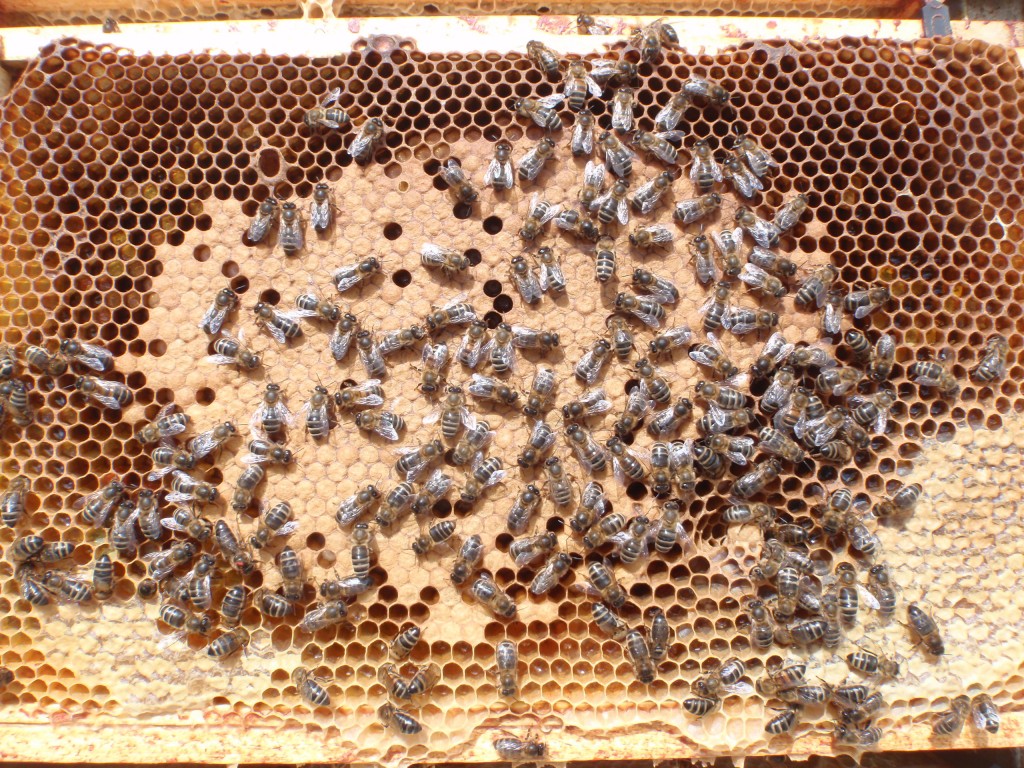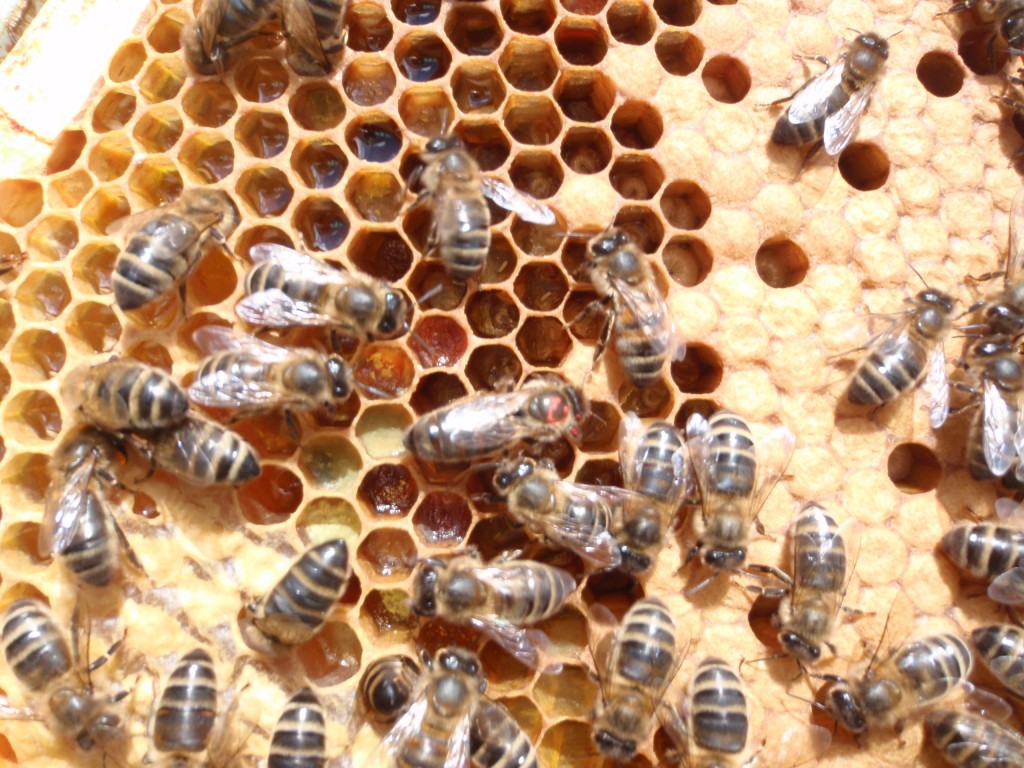10 Aug A busy Summer so far
Its been a busy Summer for both us and the bees. The hot weather has meant that the majority of the flowers and blossoms were not only full and productive this year, but they were also early.
Another issue noted by quite a few gardeners – as well as beekeepers– was that the “show” was also compressed – in that many species overlapped and the season was not as strung out as normal.
The exceptionally hot spell, which saw out July, finished off the clover and most of it got toasted. This caused an interuption to the nectar flow so we decided to harvest the bulk of the Summer crop in the last week of July. This was probably a fortnight ahead of normal, although we left most hives with 1 or 2 supers in case of a late flow from the Rose Bay Willow Herb.
Sure enough, this last 2 weeks has seen the return of some wet weather. The bees have ramped up their activity again, making clear flight lines as they emerge from the hives and then returning front heavy – often bouncing on the landing boards before tumbling back in.
As far as colony strength is concerned, it’s been an unusual see-saw year for many local bee keepers.
The mild winter meant strong Spring colonies. This was good for an early kick off to the season and meant a good Spring crop of honey – as can be seen from the 2014 Spring Crop summary. However this was followed in May by an exceptional swarming season – at least for us.
No matter what we did, it seemed most of the hives were intent on swarming, even though all of the colonies had young queens. On one hot day in late May, I had 5 swarms sitting on various parts of the hedgerow that separates us from the estuary saltings. Traditional swarm collection methods were impossible due to the way the swarms had grouped around multiple small branches, often deep within blackthorn and hawthorn clusters. ( I have a cunning plan for next years difficult swarms – more on a later blog).
Naturally we tried our best but out of about 10 swarm collections we only salvaged 2 viable colonies. The rest either cleared off again into the wilds, or faded away with poor laying patterns.
This left many of the colonies with new, virgin queens, needing to mate before they could start to build up from their depleted numbers. Fortunately the good weather continued. This is essential for good mating flights for the queens and subsequent foraging for pollen for sustaining the new emerging broods. By mid July the hives were starting to get back to full strength, leaving only 2 weak hives with no laying and one cast swarm in a Nuc box.
This week one of the weak colonies collapsed completely and was robbed out of remaining stores by its neighbours. The other previously weak colony suddenly turned itself around. On inspecting it I found newly laid eggs and a healthy looking young queen darting around the frame I marked her with red tipp-ex for easier future reference. (I only mark the thorax with tipp-ex – I do not clip the wings of my queens as some beekeepers do).
And here is a close up. Although the queen is a little blurred, you can see the new brood in all its stages:
newly laid eggs – like small grains of rice, larvae at different ages, sealed cells of pupae.
Also visible is some stored honey and pollen, for this time of year possibly the light green being Meadowsweet and the orange Field Scabious


